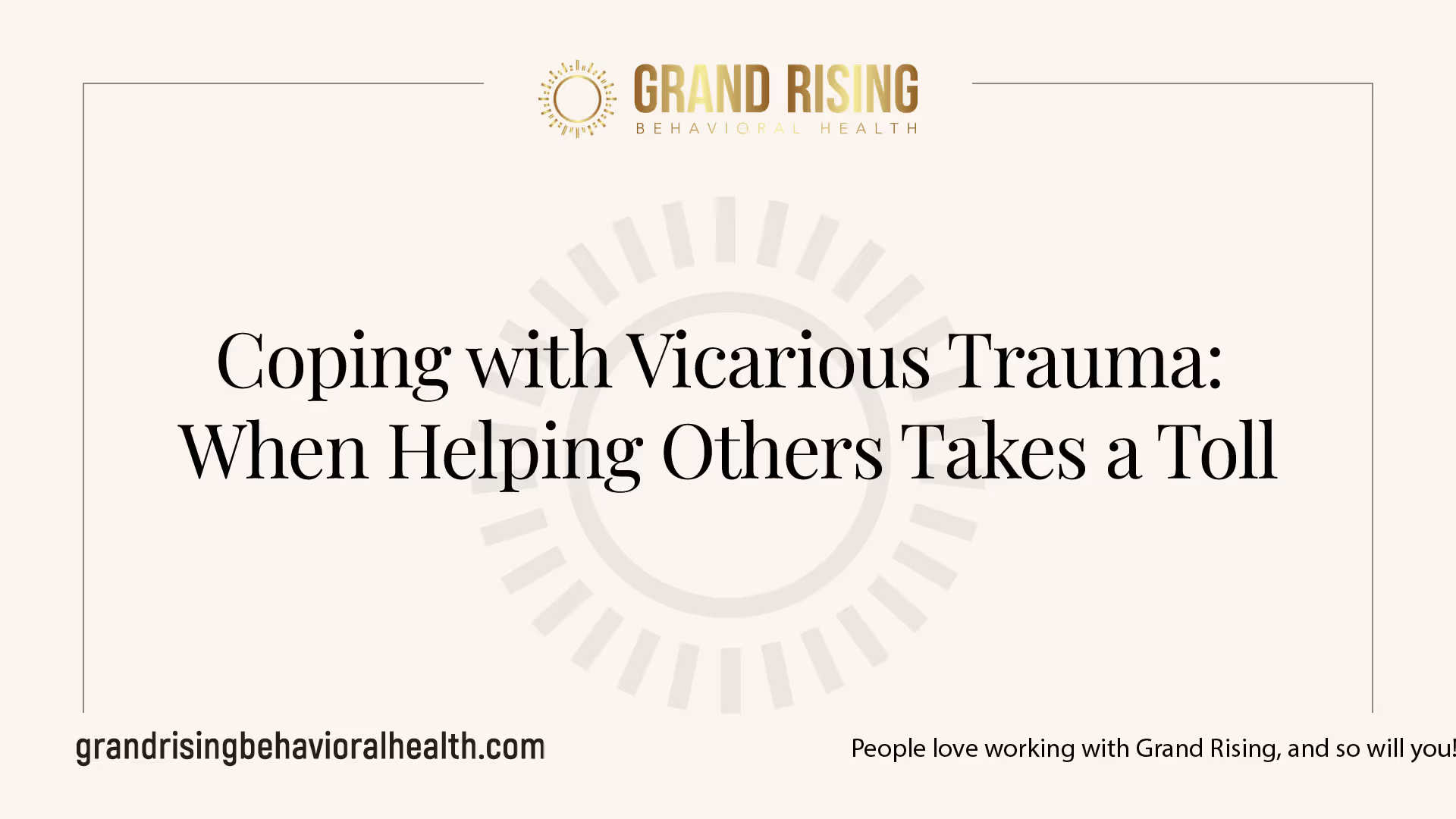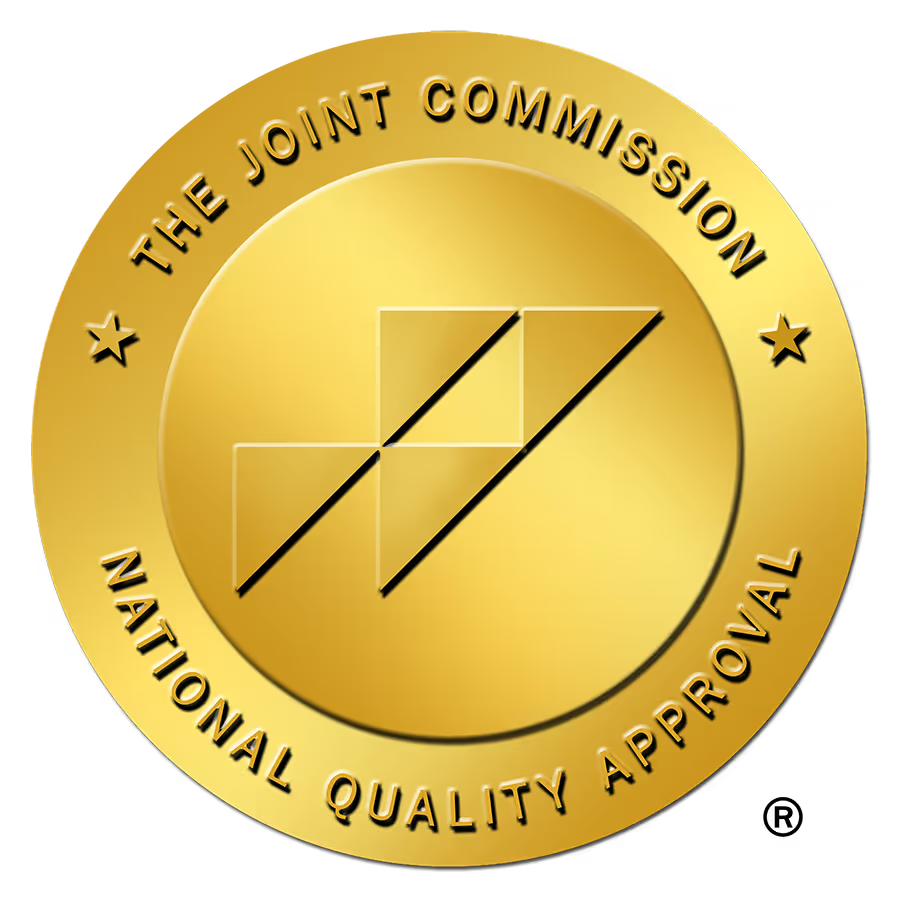Coping with Vicarious Trauma: When Helping Others Takes a Toll
Explore vicarious trauma: when helping others takes a toll, and discover coping strategies for resilience.

Understanding Vicarious Trauma

Definition and Impact
Vicarious trauma is defined as the indirect exposure to trauma through firsthand accounts or narratives of traumatic events. It can occur in individuals who engage with trauma survivors or witness traumatic occurrences, especially on a repetitive basis. This indirect exposure can have profound effects on mental health, leading to symptoms that can interfere with daily life.
The impact of vicarious trauma extends beyond the individuals who directly experience it. It can affect healthcare professionals, first responders, and even family members of those involved in trauma-related work. Symptoms can manifest physically, emotionally, and behaviorally, creating a complex web of challenges for those exposed to others' trauma.
Impact AreaDescriptionEmotional Well-BeingIndividuals may experience emotional exhaustion, intrusive thoughts, and increased anxiety.Professional PerformanceService quality can decline due to burnout or avoidance, affecting those who depend on care.RelationshipsInterpersonal relationships may suffer, leading to isolation and stigma.
Risk Factors
Several risk factors can increase susceptibility to vicarious trauma. Individuals who frequently work with trauma survivors, such as health and human service providers, are particularly at risk [2]. Here are some common risk factors associated with vicarious trauma:
Risk FactorDescriptionRepetitive ExposureContinuous engagement with individuals sharing traumatic experiences increases vulnerability.Lack of SupportLimited access to supervision or peer support can exacerbate feelings of isolation and stress.Personal Trauma HistoryProfessionals with their own histories of trauma may experience amplified symptoms as a result.High-Stress EnvironmentWorking in high-stress settings can contribute to emotional burnout.Resilience LevelsIndividuals with lower resilience may find it more challenging to manage the stressors associated with secondary trauma.
Understanding the definition and impact of vicarious trauma, as well as the risk factors involved, is essential for developing effective coping strategies. For more information on dealing with trauma and recovery, consider reading about coping with trauma triggers or exploring the effects of the impact of intergenerational trauma.
Recognizing Vicarious Trauma
Understanding how to recognize vicarious trauma is essential for individuals who work in supportive roles, as early identification can lead to more effective coping strategies.
Signs and Symptoms
Vicarious trauma can manifest in various ways, affecting individuals physically, emotionally, and behaviorally. Common signs include:
Physical SymptomsEmotional SymptomsBehavioral SymptomsChronic fatigueEmotional exhaustionAvoidance behaviorsInsomniaIrritabilityReduced engagement with clientsHeadachesSelf-doubtIncreased absenteeismGastrointestinal issuesFeelings of helplessnessSubstance misuse
According to a 2019 review, symptoms may also include intrusive thoughts, nightmares, and general disorientation [1]. It's important for professionals working with individuals who have experienced trauma to be aware of these signs, as they can indicate the onset of vicarious trauma.
Effects on Individuals
The impact of vicarious trauma extends beyond just immediate symptoms; it can lead to long-term mental health challenges. Individuals experiencing vicarious trauma may find it difficult to maintain personal relationships due to emotional detachment or irritability. Furthermore, this type of trauma is linked to conditions such as depression and anxiety, escalating the overall burden faced by those in caregiving professions.
The phenomenon is closely related to concepts like secondary traumatic stress (STS) and compassion fatigue (CF), which also present with overlapping symptoms. VT primarily focuses on cognitive changes resulting from empathic engagement, whereas STS emphasizes external signs resembling PTSD, and CF encompasses STS symptoms combined with burnout [2].
Support from colleagues is critical when navigating these challenges. Coworkers can help by creating a supportive work environment and offering assistance when they notice signs of vicarious trauma [4]. Recognizing these symptoms is a crucial step in fostering resilience and ensuring mental well-being in therapeutic and caregiving settings, aligning with the broader theme of resilience factors in trauma recovery.
Coping Strategies for Vicarious Trauma
Coping with vicarious trauma requires implementing effective strategies to manage its impact on mental and emotional well-being. These strategies can be categorized into self-care practices and seeking support and supervision.
Self-Care Practices
Engaging in self-care activities is essential for individuals experiencing vicarious trauma. Self-care practices help restore balance and promote resilience in professionals dealing with trauma. Some recommended self-care strategies include:
Self-Care StrategyBenefitsTaking BreaksReduces burnoutExerciseBoosts mood, reduces stressMindfulnessImproves emotional regulationCreative OutletsProvides therapeutic distraction
Seeking Support and Supervision
In addition to self-care practices, it is vital for individuals coping with vicarious trauma to seek support and supervision. This can involve various forms of social support:
Support TypePurposeTherapyProvides professional guidancePeer SupportFacilitates shared experiencesSupervisionOffers mentorship and coping strategies
Fostering a culture of support and open communication within trauma-related professions can significantly mitigate the effects of vicarious trauma. By prioritizing self-care and seeking out supportive networks, individuals can navigate the challenges associated with helping others while maintaining their own well-being. For more strategies on managing trauma, refer to our article on strategies for trauma recovery.
Vicarious Trauma in the Workplace
Vicarious trauma can significantly affect professionals, particularly those who work closely with individuals who have experienced trauma. Understanding this impact and developing strategies within organizations to address it is crucial for maintaining a healthy workforce.
Impact on Professionals
Individuals who work with survivors of trauma and violence often face the risk of being negatively impacted by vicarious trauma. Continuous exposure to traumatic cases can take a toll on their mental health, leading to symptoms such as anxiety, depression, and burnout. Notably, 76% of full-time U.S.-based employees reported at least one symptom of a mental health condition in 2021, indicating a concerning trend among workers [7].
Vicarious trauma does not stem from weakness or failure, but rather from the empathetic and compassionate engagement often required in helping professions. The emotional strain can impact performance, job satisfaction, and relationships both in and outside the workplace. A table outlining the effects of vicarious trauma can illustrate the common symptoms experienced by professionals:
Symptoms of Vicarious TraumaDescriptionEmotional ExhaustionFeelings of being drained or overwhelmed by work-related stress.DepersonalizationA sense of detachment or loss of empathy for clients or patients.Reduced Personal AccomplishmentDecreased feeling of effectiveness and achievement in one’s role.
Organizational Strategies
Organizations play a critical role in preventing and managing the effects of vicarious trauma among employees. Establishing a supportive work environment, implementing stress resiliency skills, and promoting mental health resources can significantly help. According to TEND Academy, adopting strategies such as the following can be effective:
Through targeted organizational strategies, workplaces can create a culture that prioritizes mental health, recognizing that addressing vicarious trauma is essential for both professional longevity and personal well-being.
Intervention and Support
Addressing vicarious trauma (VT) is essential for restoring the well-being of those affected. Multiple interventions and sources of support can help alleviate the burden of VT and promote healing for service providers.
VT Interventions and Effectiveness
VT interventions can be categorized into several types, including psychoeducation, mindfulness practices, art and recreational programs, and alternative medicine therapy. These strategies show promise in reducing symptoms associated with secondary traumatic stress, compassion fatigue, burnout, and other mental health outcomes among individuals working in caregiving roles.
Recent studies indicate positive outcomes, demonstrating that these interventions can decrease symptoms related to VT and enhance mental well-being among service providers. However, the effectiveness of these interventions can vary due to factors such as research design, sample sizes, and follow-up periods [2].
Type of InterventionEffectivenessPsychoeducationIncreased awareness of VT and coping strategiesMindfulnessImproved emotional regulation and reduced stressArt ProgramsEnhanced expression and processing of traumaAlternative MedicineComplementary relief of symptoms
Despite the positive findings, many existing VT interventions primarily focus on general self-care and stress management without addressing the specific effects of VT. This suggests a need for tailored interventions that consider individual characteristics and the service settings of the providers [2].
Seeking Professional Help
For those experiencing significant distress due to vicarious trauma, seeking professional help is a vital step. Mental health professionals can provide targeted interventions, including therapy specifically designed to address VT-related symptoms. Psychotherapy options, such as cognitive behavioral therapy (CBT), can be beneficial in helping individuals understand and manage their emotions, thoughts, and reactions concerning the trauma they encounter in their work [1].
Furthermore, professionals who work with trauma survivors may benefit from participating in support groups. These groups offer a safe space to share experiences and coping strategies, reducing feelings of isolation and promoting community support. For more information on the role of support groups, visit our article on the role of support groups in trauma recovery.
The interconnected nature of VT, secondary traumatic stress, and compassion fatigue emphasizes the importance of comprehensive care. This multifaceted approach ensures that individuals receive the necessary resources and support to navigate their experiences effectively and promote long-term recovery and resilience. Individuals seeking assistance can explore various routes, including strategies for trauma recovery, to find the most suitable solutions for their circumstances.
Addressing Vicarious Trauma Holistically
To effectively manage vicarious trauma (VT), it is essential to adopt a holistic approach that incorporates tailored interventions and focuses on building resilience. Such strategies address not just the symptoms of VT but also promote overall well-being.
Tailored Interventions
Tailored interventions for vicarious trauma are crucial since existing approaches often concentrate on generic self-care and stress management without considering the specific effects of VT. These interventions should be based on the unique settings in which service providers operate and their individual characteristics. Effective methods may include:
A study highlighted the effectiveness of these interventions in alleviating secondary trauma stress, compassion fatigue, burnout, and other mental health outcomes among service providers.
Building Resilience
Building resilience is an essential aspect of coping with vicarious trauma. Resilience factors contribute to recovery and empowerment when facing the challenges associated with VT. It involves:
Resilience can also be enhanced through continued education around trauma dynamics and the development of strategies for maintaining emotional balance. Addressing these components holistically promotes a comprehensive support system for those affected by vicarious trauma, contributing to better mental health and service quality in high-stress environments.
Evaluating and adapting these approaches provides a pathway not only for recovery but also for long-term resilience among service providers faced with the emotional burden of helping others in distress. For additional insight into recovery strategies, refer to the article on strategies for trauma recovery.
References
[2]:
[3]:
[4]:
[5]:
[6]:
[7]:
[8]:
More Resources
A team ready to start your journey.
Get in touch — today.
We are a safe space – a haven for exceptional individuals to receive discreet, personalized, in-person treatment and care.
.png)









